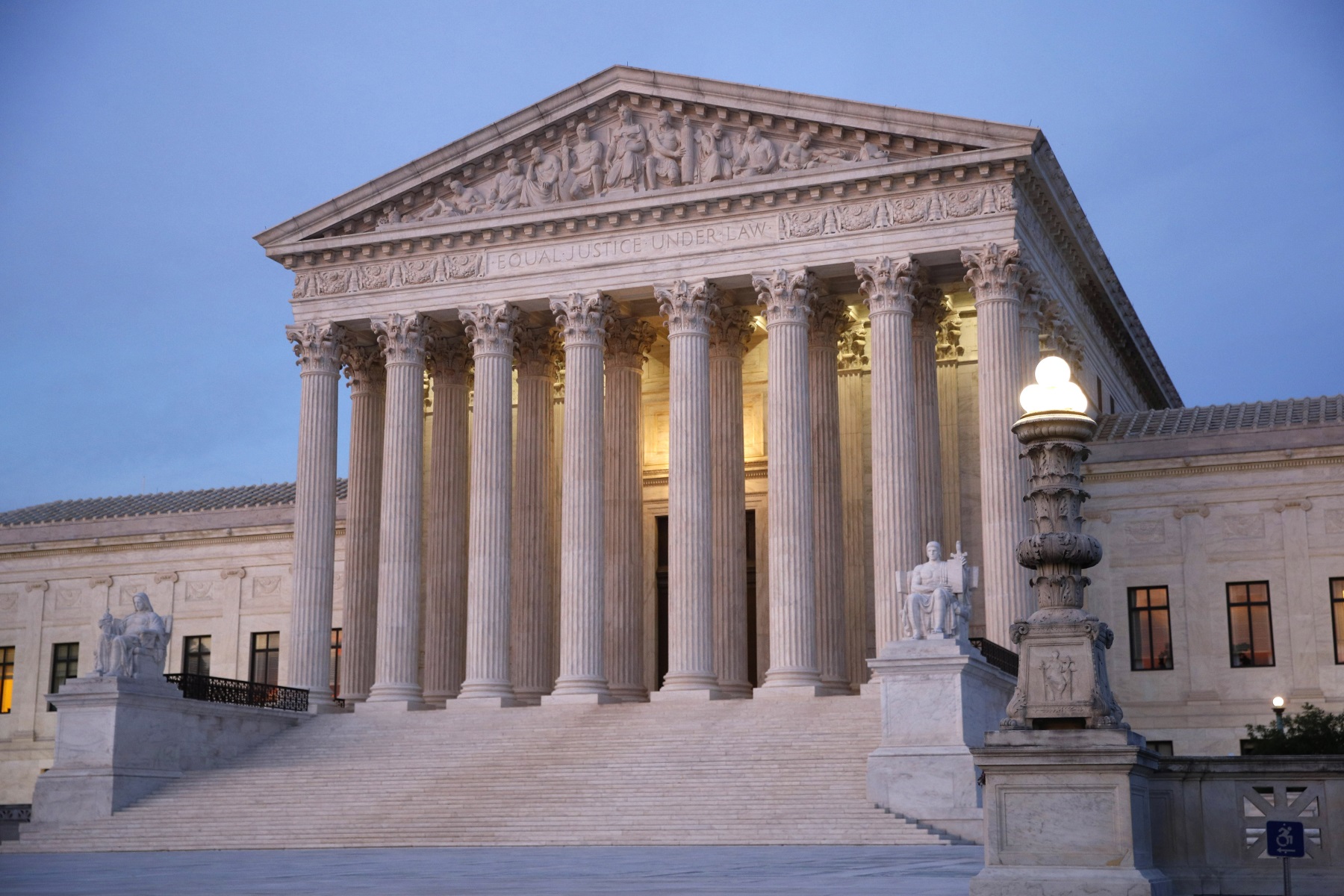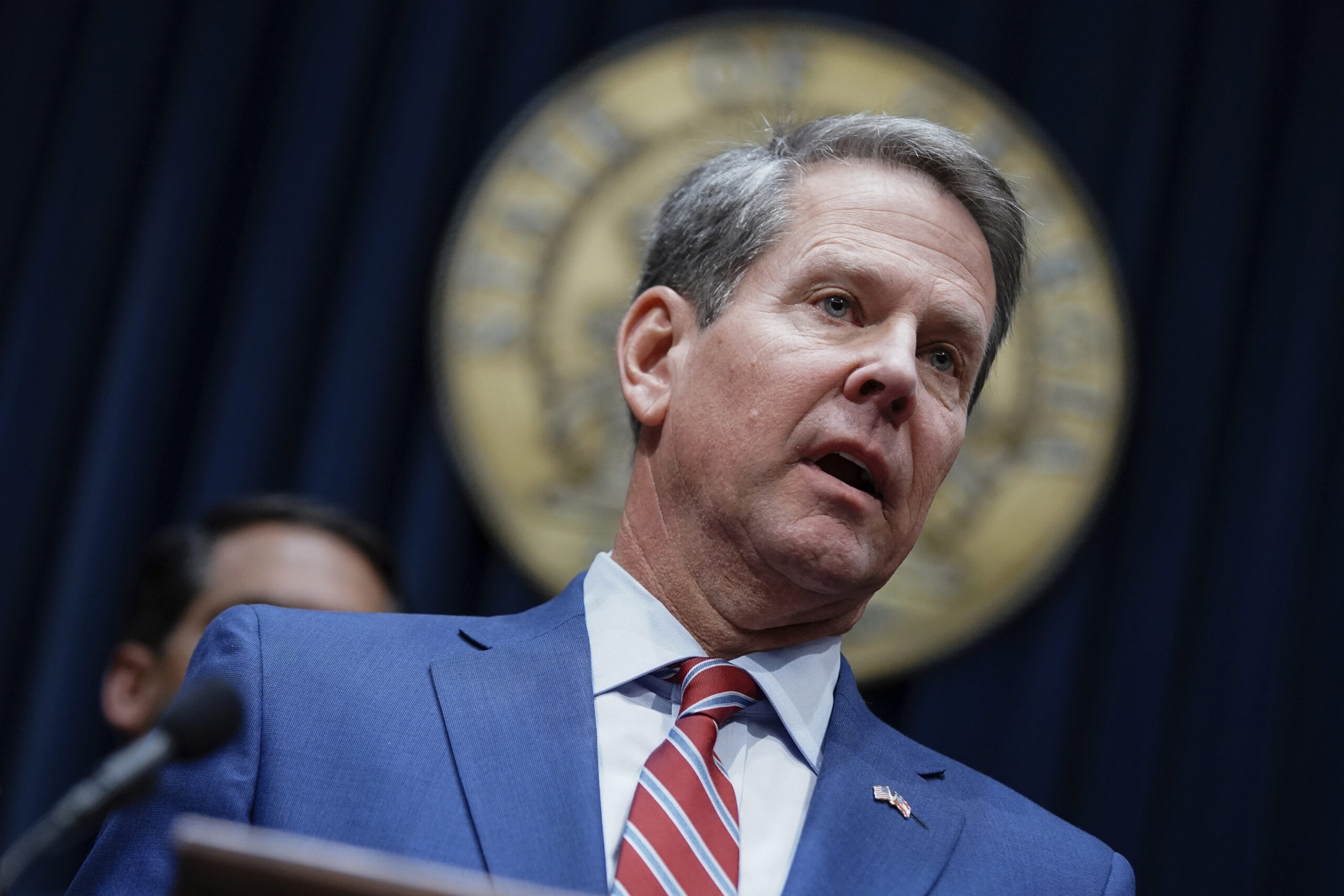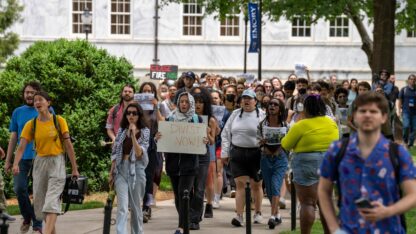A Georgia Case Helped The U.S. Supreme Court Clarify Roe v. Wade

In Doe v. Bolton, the U.S. Supreme Court considered whether Georgia’s abortion regulations were too restrictive. The companion case to Roe v. Wade had immediate concrete effects and framed the abortion debate for years to come.
Patrick Semansky / Associated Press
The U.S. Supreme Court’s decision in Roe v. Wade made abortion legal. But a Georgia case decided the same day clarified that landmark decision.
In Doe v. Bolton, the court considered whether Georgia’s abortion regulations were too restrictive. The companion case to Roe had immediate concrete effects and framed the abortion debate for years to come.
The current fights over expanding and restricting abortion rights echo many of the same issues raised in Doe. Even though the case is often overlooked, it still resonates today.
In October 1972, civil rights lawyer Margie Pitts Hames stood before the high court to argue Georgia’s abortion law was unconstitutional.
Excerpts from the oral argument in Doe v. Bolton come from Oyez, a free law project by Justia and the Legal Information Institute of Cornell Law School.
“It is important that legislatures not encumber a fundamental constitutional right with so many procedures as to effectively manipulate it out of existence,” Hames argued.
At the time, abortions in Georgia were allowed only in cases of rape, to protect a mother’s heath or in the event of fetal defect. Multiple doctors had to give the greenlight, and the procedure had to happen in an authorized hospital.
“[The regulations] in many instances deprive women of their fundamental right to decide whether or not to have a child, and I think that that is not properly a legislative judgment,” Hames continued.
>Related: A Look At Georgia’s New ‘Heartbeat’ Bill And What Happens Next
The plaintiff in the case, Mary Doe, had requested an abortion at a public hospital in Atlanta, but she had been turned down. Hames argued Doe’s rights had been violated and that Georgia’s laws threatened women’s health.
“I think the real question that this court is faced with is whether abortion is going to be made a legal health service for women or whether it’s going to be kept in the illegal realm,” Hames said.
On the other side, defending the abortion restrictions, was Dorothy Beasley. She worked in the office of Arthur Bolton, then the Georgia attorney general.
On a recent morning, she sat in the kitchen of her home in Sandy Springs, leafing through a transcript of the argument she made before the court that day.
Beasley says more than 40 years later, she can still remember standing before the justices preparing to speak.
“You’re up there by yourself, and you’re looking at these nine old men,” she said, laughing. “You know that they have really studied this hard, but you’ve gotta know more about it than they do.”
Beasley says Georgia’s abortion regulations were intended to preserve women’s health. Similar laws were on the books in about a quarter of the states at the time.
“Allowing an abortion was a very, very serious matter, so it should have these protections that were protections of the woman’s health, and also to make sure that it is done under proper circumstances,” she said.
Beasley accented that point when making her argument in Doe.
“The underlying base and foundation [of the Georgia law] was we are not going to destroy fetal life except in very unusual and exceptional extreme circumstances,” she said at the time.
But Beasley failed to convince the high court. In a 7-2 decision, the justices struck down Georgia’s abortion law and laws like it all over the country.
On the same day that Roe v. Wade legalized abortion, Doe v. Bolton said how far states could go to regulate it.
>Related: The Abortion Fight In Georgia Could Echo Nationally
“What it did was show how Roe was supposed to be applied,” said Carol Sanger, who studies abortion regulation at Columbia Law School.
She says Doe had immediate practical consequences. For one, women no longer needed a reason to request an abortion.
“It said you really don’t have to have grounds. You can simply find a doctor who does abortions, tell them you have an unwanted pregnancy and you would like to terminate,” Sanger explained.
The ruling also said abortions didn’t have to happen in authorized hospitals, which paved the way for providers to offer abortions in other settings.
“It allowed for freestanding abortion clinics to open in Georgia and ratified the legitimacy of their existence in other states, like New York,” said Claire McKinney, who studies abortion politics at the College of William and Mary.
McKinney says Doe also established abortion as a health issue, first and foremost.
“For abortion-rights advocates, it really lended credence to this idea that abortion care is part of more general reproductive health care,” she said. “For anti-abortion activists, it really allowed them to push on what restrictions that could protect women’s health.”
Those restrictions have taken many forms, such as requiring abortion providers to have hospital admitting privileges.
Current fights over abortion rights continue to focus on women’s health. The issue was front and center in the debate over Georgia’s new abortion law set to take effect in January.
Other cases may have changed the legal landscape around abortion in the decades since Doe, but to Dorothy Beasley, who argued the case before the U.S. Supreme Court, the conversations about the issue sound the same.
“The case having been a very long time ago is still alive in many ways,” she said. “The subject continues to be a problem in society.”
As she sits remembering her role in Doe, Beasley takes pains not to share her personal feelings on the issue of abortion or on Georgia’s new abortion measure.
Defending the state’s laws isn’t her job anymore.








